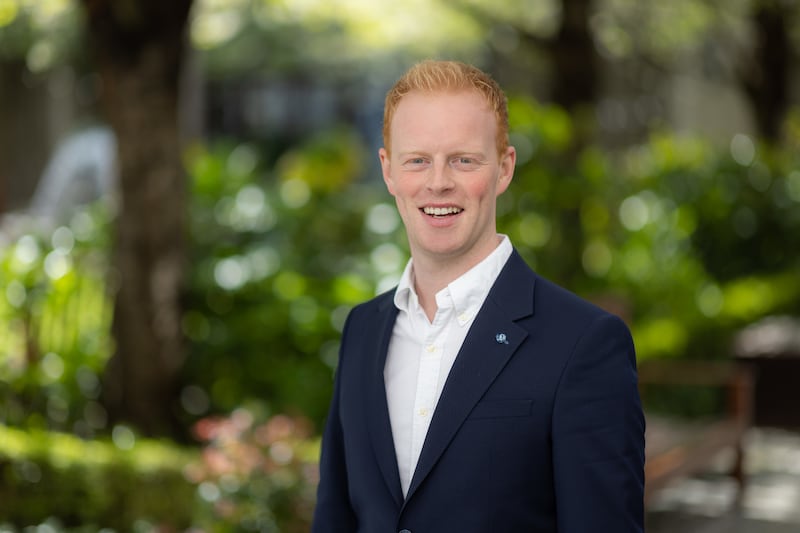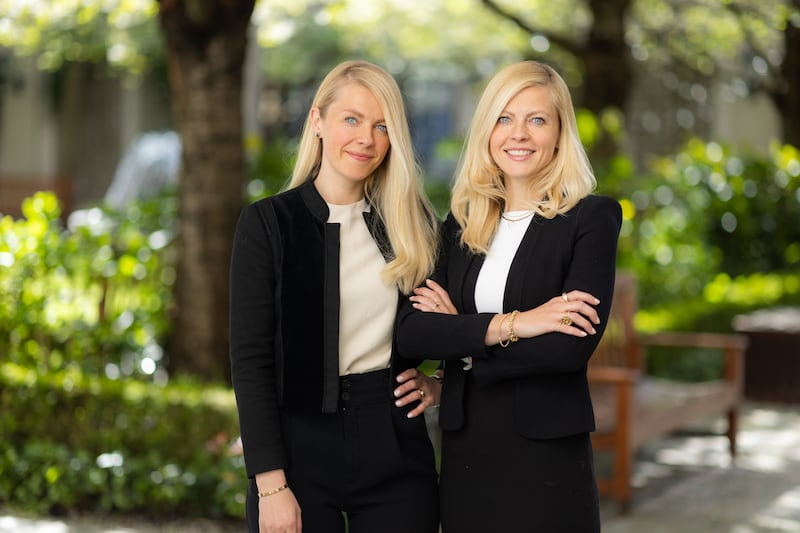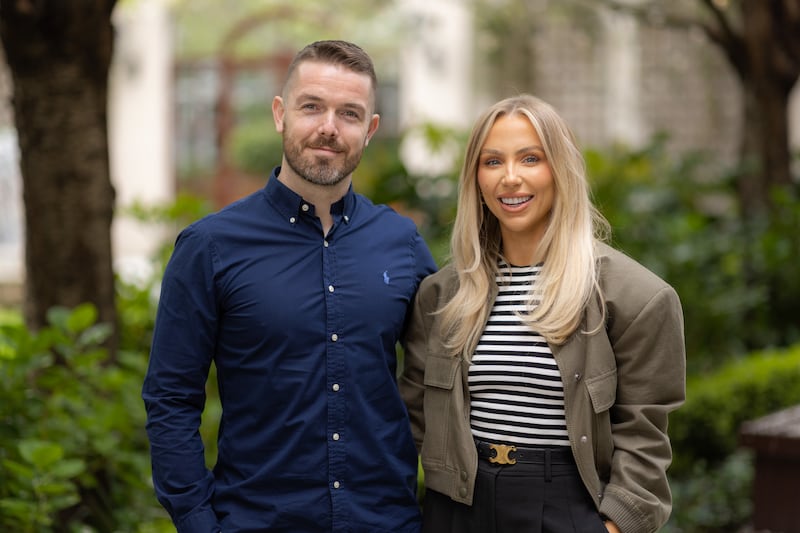
Sam Moffett, Moffett Automated Storage
Sam Moffett founded Moffett Automated Storage, which designs, manufactures, installs and supports fully integrated automated warehouse pallet storage systems and allows end users to pick and pack from palletised materials.
The product can be integrated with an end-user enterprise resource planning system to allow fully automated retrieval and storage of pallets from a racked warehouse system using shuttles to physically transport the pallets from one location to another.
The product can achieve significant cost savings for company operations, while increasing reliability and reducing product damage.
Q: What vision/lightbulb moment prompted you to start up in business?
READ MORE
A: I realised that storage solution systems seemed to be going higher and higher due to limitations in ground space, and I recognised that getting to those heights presented challenges for traditional lifting equipment, particularly for heavy palletised goods.
It became obvious to me that the solution to that challenge was in automated equipment that could work at height. It was at this moment that the idea was born.
Q: What is your business model and what makes your business unique?
A: Our business model is built around generating additional space alongside significant cost savings for our end customer. This customer can operate in any industry, so long as they have the need to store and retrieve palletised goods.
The solution is multidirectional and can move between levels, which provides significant flexibility and scalability, and when compared to other products the Moffett solution has significantly higher throughput and product availability.
Q: What is your greatest business achievement to date?
A: I think my greatest achievement has been winning a $16 million Canadian dollar [€10.9 million] project in Canada. This has been huge for our business and our reputation in the market as we continue to prove our capabilities internationally.
Aside from this, another great moment was the official opening of our new head office in the summer of 2022. Due to the rapid growth in employee numbers, we had to renovate the office space to create a welcoming work environment for employees and for customers to visit.
Q: What was your ‘back-to-the-wall’ moment and how did you overcome it?
A: This was at a very early stage when it struck me that software development would be essential to realising my vision. I knew it was critical to find the right person that I could trust to take my ideas and my mechanical elements and write the software code for the traffic manager.
I set out to find the right person and was lucky to find an experienced developer who worked with me to turn concept into reality. Today that software development team has grown to 10.
Q: Which moment/deal would you cite as the ‘game changer’ or turning point for the company?
A: We secured two orders around the same time in 2020 for large cold store systems in excess of 10,000 pallet spaces, one in Ireland and the other in Europe. I think that was the point at which I realised that the company was going to expand internationally rapidly.
I remember sitting down with my most trusted staff and making a plan of how we were going to scale, and the number of additional people we needed to hire. It was a really exciting time. Now we have taken orders for systems in excess of 40,000 pallet spaces.
Q: To what extent does your business trade internationally and what are your future plans/ambitions?
A: We have completed projects in the UK, UAE, Europe and US. We have ongoing projects in UK and Europe, as well as a large Canadian project which has recently started.
Around 65 per cent of our turnover in 2023 will be generated by projects outside Ireland and we expect that this will be even higher in 2024.
We see breaking into the North American market as a key driver to our growth going forward and will play a big part in our future plans.
Q: What is your growth funding path?
A: We have self-funded to date, and we plan to continue on this path by continuing to fund the business through reinvestment of profits. We plan to invest heavily in R&D that will lead to additional orders from customers across a wide range of industries.
Q: What are the big disruptive forces in your industry?
A: I would say that software development and automation technologies in general are the big disruptive forces in the industry, More specifically, AI and machine learning are having a major impact.
These technologies can enhance AS/R pallet systems by enabling predictive analytics, optimising storage and retrieval processes and improving inventory management.
Q: What makes your company a good place to work? For example, diversity and inclusion, flexible working, supported learning, health promotion, CSR initiatives?
A: We have a modern head office with a great cultural diversity with staff from 10 nationalities. About 16 per cent of our employees are women, which I believe is a pretty good ratio for the engineering industry, although we are constantly trying to improve this.
Q: What is the most common mistake you see entrepreneurs make?
A: Premature scaling would be the main mistake that I have seen. A lot of entrepreneurs try to run before they can walk, and I can see how it is easy to become carried away in the midst of all the excitement of new orders.
It is so important to stay focused and invest time into getting your product up and running and iron out the niggles first, before becoming aggressive with customer acquisition and rapid growth.
Poor oversight of spending while scaling is also a problem, so don’t forget about your financial plans, cash resources and the bottom line.
Deirdre O’Neill and Dr Helen O’Neill, Hertility

Deirdre and Dr Helen O’Neill are co-founders of Hertility, which offers a 360-degree view of a woman’s health. It is involved in research and innovation for diagnostics to provide end-to-end care from menstruation through to menopause.
The company provides female health assessments and teleconsultations with experts in fertility, menopause, polycystic ovary syndrome, endometriosis and gynaecology, both direct to consumer and to organisations as an employee benefit, alongside scanning and clinic referrals.
Its big-picture aim is to change attitudes around reproductive health, including in the workplace, and to encourage women to be proactive by tracking their reproductive health and fertility.
Q: What vision/lightbulb moment prompted you to start up in business?
A: It was when Dr Helen saw the date of birth of someone the same age as her on a test tube in the lab and realised she was nowhere near the stage of having a family and had no idea how to even assess her own fertility, despite being an expert.
We recognised the lack of accessible and personalised fertility care options and realised the potential of leveraging technology and data-driven insights to fill this gap.
This lightbulb moment inspired us to create Hertility, a platform that combines advanced testing, medical expertise and personalised guidance to revolutionise the way people approach their fertility journeys.
Q: What is your business model and what makes your business unique?
A: Hertility offers personalised and end-to-end reproductive health solutions. The business model combines advanced technology, comprehensive testing and expert medical guidance to provide individuals and couples with a comprehensive approach to reproductive and hormonal health care.
By focusing on individual needs and leveraging data-driven insights, Hertility aims to empower people in their journeys, making their services truly distinctive in the industry.
Q: What is your greatest business achievement to date?
A: Hertility’s offering is the first of its kind and will revolutionise diagnostics, treatments and longevity in women’s health. Our core focus is in our longitudinal data to enable earlier detection and diagnosis.
At present, we can screen over 18 gynaecological pathologies – including predicting the onset of menopause and fertility decline. While the route to market was at-home diagnostics, the true value lies in our longitudinal dataset from menstruation through menopause.
Q: What was your ‘back-to-the-wall’ moment and how did you overcome it?
A: We have built this company through a global pandemic, lab shortages, a war in Ukraine and a financial fallout – all alongside 27 months of pregnancy.
We’ve done this with babies in our bellies, on our boobs and in our boardrooms. We overcame these challenges because we have a genuine and sincere will to help people avoid the reproductive rollercoaster.
Q: Which moment/deal would you cite as the ‘game changer’ or turning point for the company?
A: We have worked incredibly hard to become the most regulated company in the market. Obtaining our CQC [Care Quality Commission] to diagnose, treat and prescribe was the biggest game changer as it allows us to provide end-to-end care for all users from testing to telemedicine to treatment in the UK.
Q: To what extent does your business trade internationally and what are your future plans/ambitions?
A: Hertility is regulated across the UK and Europe and is operational in Britain and Ireland. Our plans are to become a globally recognised leader in the diagnostic and reproductive health market.
Q: What is your growth funding path?
A: By targeting every aspect of reproductive and hormonal health, rather than just fertility, we’re seeing amazing growth. We closed out this year at 520 per cent growth from last year. We aim to be at break-even by 2025.
Q: How will your market look in three years and where would you like your business to be?
A: In three years, the reproductive health market is expected to continue expanding, driven by technological advancements, increased awareness and evolving societal norms.
Telemedicine and digital platforms will play a prominent role, offering personalised fertility solutions and remote consultations.
Q: What are the big disruptive forces in your industry?
A: The reproductive health industry is being disrupted by technological advancements such as AI, telemedicine and at-home testing. Direct-to-consumer testing enables individuals to access fertility services conveniently.
Q: What are you doing to disrupt, innovate and improve the products or services you offer?
A: Hertility disrupts and innovates the reproductive health industry by combining advanced technology, comprehensive testing and expert guidance. We continuously improve our products and services by leveraging data-driven insights, personalised treatment plans and at-home testing kits.
Q: Is AI impacting your business and industry?
A: It is profoundly impacting Hertility’s business and the fertility industry by enhancing diagnostic accuracy, personalised treatment plans and data analysis.
AI algorithms assist in interpreting test results, optimising fertility recommendations and improving overall diagnostic outcomes. This technology-driven approach enables Hertility to deliver more precise, efficient and tailored fertility solutions to individuals and couples.
Q: How is the current inflationary environment affecting your business? How do you expect things to unfold?
A: This could potentially impact Hertility’s operations as we rely on physical products or services that are subject to inflationary pressures. Higher costs may lead to pricing adjustments, reduced profit margins or the need for cost-saving measures.
Q: What is the most common mistake you see entrepreneurs make?
A: One common mistake we see entrepreneurs make is underestimating the importance of market research and validation. Failing to thoroughly understand the target market and customer needs.
We recognised that no woman is the same, so we built our product with every woman in mind so that each user is getting advanced personalised and truly bespoke diagnostic insights and pathways to care that are relevant to them at their life stage.
Q: What is the single most important piece of advice you would offer to a less experienced entrepreneur?
A: Protect your IP.
Rosie Connolly and Paul Quinn, 4TH ARQ

Rosie Connolly and Paul Quinn are a husband and wife duo and co-founders of the premium lifestyle brand 4TH ARQ.
The company’s mission is to create an everyday uniform that makes the wearer feel their best and look great. It believes the paradigm has shifted and fashion as an expression of personality, and the way in which it is consumed, has changed. The brand has grown significantly with new product lines selling out within minutes.
Q: What vision/lightbulb moment prompted you to start up in business?
A: Owning a fashion business was always a dream of Rosie’s. As a social-media influencer Rosie had built a loyal following of over 350,000 on Instagram. Being so closely connected to her audience provided her with unique insights into their preferences when it came to fashion.
Paul had been working in refrigeration engineering, but this business came to a halt during the pandemic with the closure of pubs and restaurants. It was at this moment that we felt it was the right time to take the risk.
Q: What is your business model and what makes your business unique?
A: We are an online business-to-consumer business which operates a drop strategy when it comes to new releases or restocks.
We have a very loyal customer base who keep a keen eye out for new product lines, which often sell out within minutes. Our customers are our number-one priority and their loyalty is something that we are so grateful for.
Q: What was your ‘back-to-the-wall’ moment and how did you overcome it?
A: When we first started out, we thought that we would have the capacity to fulfil orders from our garage. We were very wrong. We outgrew the space in a matter of weeks and decided that we needed to outsource our fulfilment.
We had just started to work with a new fulfilment partner when an error in their system allowed our product to oversell by 6,000 orders. That meant we had to manually refund 6,000 customers and explain to them what had happened.
It was one of those moments we didn’t think we would come back from. Understandably, customers were upset, and we didn’t have a team in place to support us.
After this, we took the fulfilment back in-house, built our own team and got going again. The one big lesson we learned from this was that the demand for our products was way higher than we had anticipated. This pushed us to order big for the next drop.
Q: Which moment/deal would you cite as the ‘game changer’ or turning point for the company?
A: We took the fulfilment side of the business back in-house for almost two years before reaching capacity. We knew to scale the business that we needed to outsource fulfilment.
Our previous experience taught us that we needed to find the right partner who could handle large volumes of traffic on launch days and provide a clear timeline for delivery.
We searched for months and almost signed with a partner in Belgium before we found a partner to meet our needs here in Dublin. This was a big turning point for us.
The transition was incredibly smooth and has allowed us to launch more stock on each drop to meet demand. Knowing that the logistics are being managed so well means that we can focus on the future expansion and growth of the business.
Q: To what extent does your business trade internationally and what are your future plans/ ambitions?
A: We are currently tracking at 18 per cent International business year-to-date, mainly from the UK. We have big plans for growth and expansion into both the UK and US markets in the coming months. This will be supported with strong social campaigns and collaborations. Growth will be our primary focus for 2024.
Q: What is your growth funding path?
A: Initially we used our savings to start the business, so we did not require a loan. Due to our drop strategy model, we would sell out of stock within the first day, sometimes within 30 minutes. This meant we had the funds within three business days to order more stock.
As demand increased, we found ourselves in need of additional funding. An investor came on board over a year ago who was able to invest some funds to help with cash flow.
We are currently self-sufficient and are not currently seeking investment. However, this may change as we roll out our growth and expansion plans.
Q: How will your market look in three years and where would you like your business to be?
A: Our business plan for the next three years is based on expanding our range of products to attract new customers while also ensuring that we continue to appeal to our existing customers.
As well as expanding our product range, we aim to grow our presence outside Ireland. Currently our UK customer base is growing rapidly. Further afield we are seeing some traction in the US and Australia, which we plan to capitalise on over the next three years.
Q: Is AI impacting your business and industry?
A: The advances in technology and learning have become more apparent to us since we switched to our new fulfilment partner.
Their systems automatically track our best-selling stock on an hourly basis and move those items closer to the picking stations which leads to a faster and more efficient turnaround time for each customer order.
The enhanced stock management informs our decision-making when it comes to placing orders for new stock and eliminates the risk of over- or under-ordering.





















